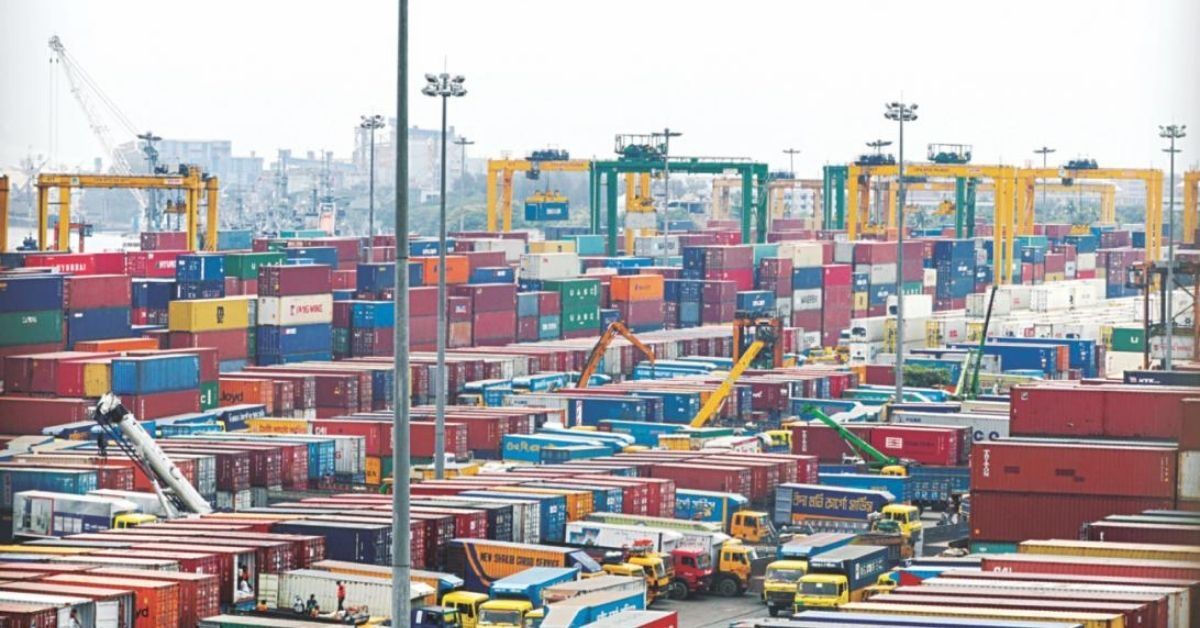Afsarul Ameen, lawmaker from Chattogram-10 constituency, has invested in Anchorage Containers Depot located in South Kattali area, 10 km away from Chattogram port, while Dhaka-based AGC Group has invested in Bay Link Containers Depot in Barabkunda area of Sitakunda, 35 km away from the port.
The two depots have started storing empty containers from July this year with the approval of the National Board of Revenue (NBR). Once the infrastructure construction work is completed, the depots will start handling containers of imported and exported goods with the approval of the NBR, said sources.
According to sources, the ICDs – each set up on 20 acres of land – are built with an investment of Tk800 crore in total.
They will be able to hold about 12,000 twenty-foot equivalent units (TEUs) of containers when they are fully operational in 2024 and handle about six lakh containers annually.
Currently, there are 19 ICDs with a capacity of 76,000 TEUs in the country. The two new private ICDs will increase the country’s capacity of storing containers to 88,000 TEUs.
The 19 existing ICDs, also known as off-docks, handle almost 95% of export goods for shipments and 38 types of import goods, including food items like rice, wheat, mustard seed, chickpeas and pulses, according to industry insiders.
The ICDs work to help ease congestion at the Chattogram port and facilitate quick clearance of full container loads of cargo by allowing unloading or delivery from outside the port area, sources said.
According to the Bangladesh Inland Container Depot Association (Bicda), currently investment in ICDs is Tk12,000 crore and about 35,000 people work at these ICDs. At present, to build a new ICD involves a minimum of Tk500 crore.
Anchorage Limited Managing Director Faisal Amin told TBS, “Our ICD has a capacity of storing 4,000-4,500 TEUs of containers. In 2024, we can start the operation of the ICD.”
A senior employee of Bay Link Containers Depot said, “We have started storing empty containers from July this year. About 100 empty containers are being handled per month. So far we have handled about 500 empty containers.”
He said the Bay Link Containers Depot will be able to store around 8,000-10,000 TEUs of containers at a time when it starts operating in full swing and annually handle about four lakh containers.
“Once the shed is constructed, we will apply to the NBR for a license to handle import and export goods. By the end of 2023 or the beginning of 2024, we can officially begin operating the depot,” he added.
Sources at the Bangladesh Garment Manufacturers and Exporters Association (BGMEA) said ICDs are struggling to cope with the current growth in exports in the readymade garment sector. As the quantity of goods sent to depots from different factories increases during the Eid seasons, the queue of covered vans on the road carrying goods becomes longer. Businesses have to wait for more than 10 days to unload goods from a truck.
According to the BGMEA, new investment in the ICD sector is very positive for the country’s export sector. The sooner the ICDs can be brought into operation with the approval of the customs and port authorities, the better.
Syed Nazrul Islam, first vice president of BGMEA, said, “Businessmen always welcome the initiative to increase the capacity of the port. We believe the construction of the two new ICDs is a continuation of the port’s capacity-building. Business has slowed down due to the Russia-Ukraine war. If the situation normalises, demand will increase. We hope that the new depots will then play a vital role.”
Bicda President Nurul Qayyum Khan told TBS, “We welcome the initiative to build two new ICDs as they are necessary to meet the target of exporting garments worth $100 billion by 2030.” “There is currently a global slowdown in import and export trade, but we believe that it will pass soon. The new depot will play an effective role in handling Bangladesh’s growing import and export trade. Anchorage Depot has already been given Bicda membership.”









